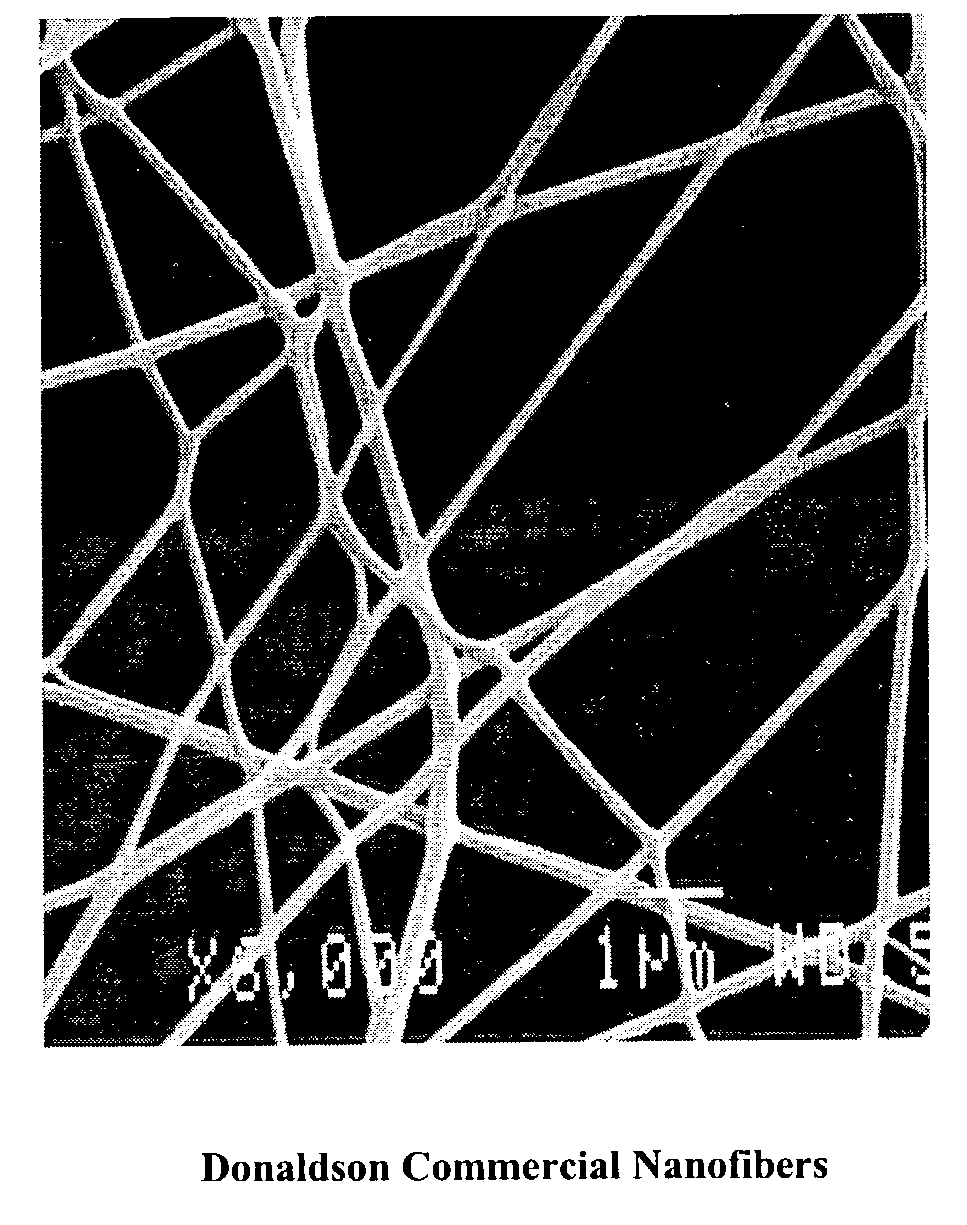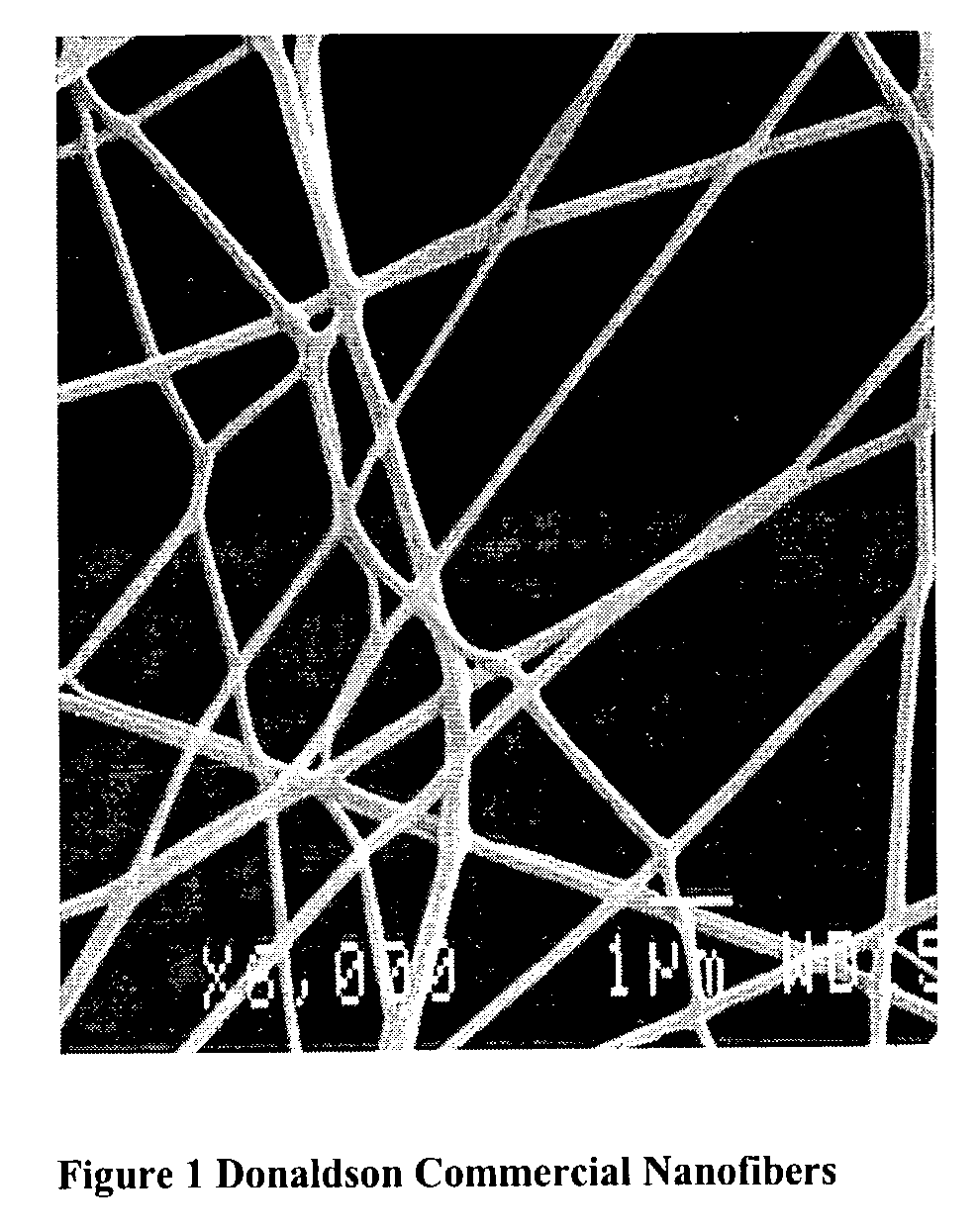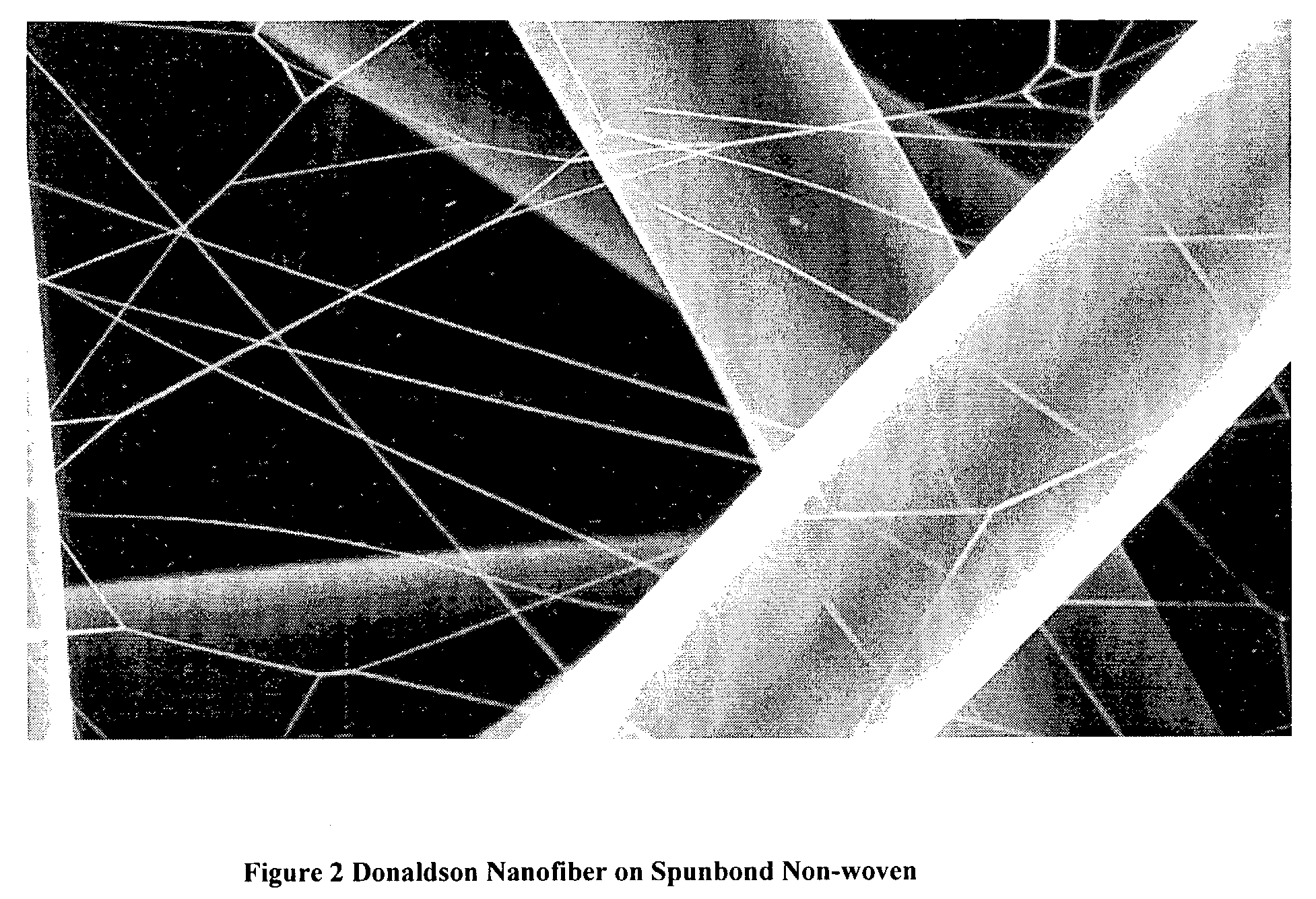Air permeable garment and fabric with integral aerosol filtration
a technology of air permeable garments and fabrics, applied in the direction of filtration separation, separation process, weaving, etc., can solve the problems of bulk air flow, wearer may experience significant discomfort, and do not provide the air permeability desired, and achieve excellent thermal comfort properties
- Summary
- Abstract
- Description
- Claims
- Application Information
AI Technical Summary
Benefits of technology
Problems solved by technology
Method used
Image
Examples
second embodiment
[0071] Referring to FIG. 18, an optional interior fabric layer 216 (interior comfort layer or skin contact layer) can be included with a fine fiber layer 210 and an outer shell 212, as shown in a multilayer fabric 200. The interior fabric layer 216 can comprise the same or a different material as the material used for the outer shell 212. The interior fabric layer 216 can be laminated to the fine fiber layer 210 with a discontinuous adhesive 218. In multilayer fabrics that include a discontinuous adhesive between the fine fiber layer and outer shell, the discontinuous adhesive between the fine fiber layer and the interior fabric layer is a second discontinuous adhesive. Outer shell 212 is laminated to a fine fiber layer 210 with a discontinuous adhesive 214 similar to discontinuous adhesive 114 of FIG. 17. This inner layer protects the fine fiber layer from contamination by body oils and skin debris. Such materials can plug pores and reduce permeability.
[0072] Typically, the interio...
examples
[0091] We have established parameters for the nanofiber layer's permeability, particle barrier properties. We believe that we understand the process and materials loptimization of the nanofiber process. We have focused on the porosity, fiber size, polymer, production process, and lamination of the products.
[0092] Simplified Fabrics
[0093] An initial screening was run with simplified fabric samples, a nanofiber layer on a supporting frabric with no covering layer. A range of nanofiber types, sizes, and substrates was tested for permeability and particle barrier properties. The particle barrier properites were measured before and after each durability test. Results of some of the runs are shown in Table 1. The runs used a variety of nylon polymers and additives.
3TABLE 1 Example Simplified Fabric Durability Results Durability Test Results Test Method is LEFS efficiency with 0.8 micron latex particles at 20 ft / min. RunFiber LEFS No. Polymer Solids Substrate Size Eff Perm 1 1 13 Cerex 100...
PUM
| Property | Measurement | Unit |
|---|---|---|
| Length | aaaaa | aaaaa |
| Length | aaaaa | aaaaa |
| Fraction | aaaaa | aaaaa |
Abstract
Description
Claims
Application Information
 Login to View More
Login to View More - R&D
- Intellectual Property
- Life Sciences
- Materials
- Tech Scout
- Unparalleled Data Quality
- Higher Quality Content
- 60% Fewer Hallucinations
Browse by: Latest US Patents, China's latest patents, Technical Efficacy Thesaurus, Application Domain, Technology Topic, Popular Technical Reports.
© 2025 PatSnap. All rights reserved.Legal|Privacy policy|Modern Slavery Act Transparency Statement|Sitemap|About US| Contact US: help@patsnap.com



